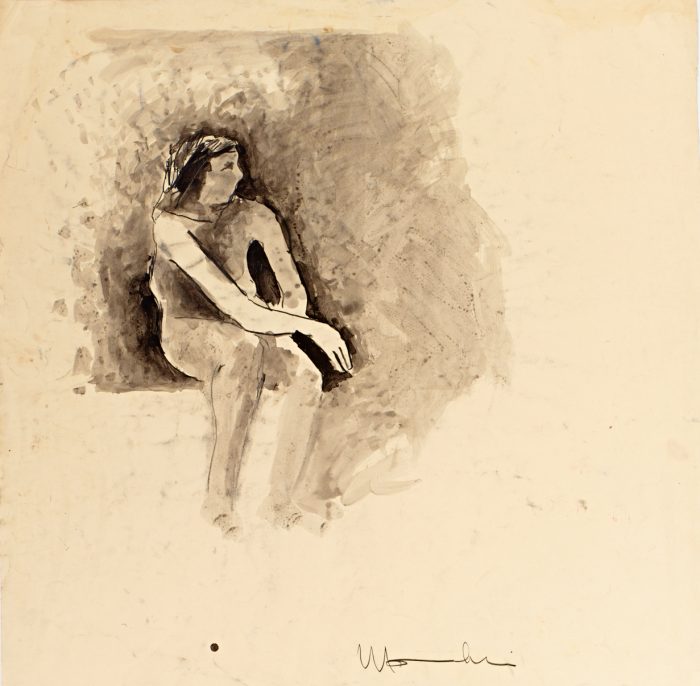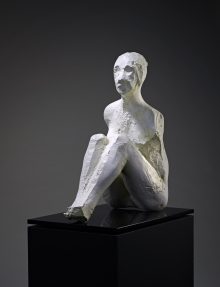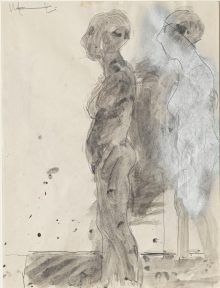Manuel Neri
Joan Brown Seated in Studio 13 1958

Reproduction of this image, including downloading, is prohibited.
Joan Brown
Neri met the painter Joan Brown at the California School of Fine Arts (now the San Francisco Art Institute) in 1957, when both were taking a painting class with Elmer Bischoff, a central figure of the Bay Area Figurative movement. A romantic and artistic partnership ensued, and Brown became a frequent subject of Neri’s figure studies. His drawings and sculptures of Brown reveal an extraordinary sensitivity to the interconnected volumes of the body, and his intimacy with his model. We see this in the earliest drawing shown here: Brown is pictured sitting casually in a classroom, her right arm stretched fluidly across her body, her shoulders gently curved as she slumps forward.
By 1959 Neri and Brown were sharing a large studio on Mission Street near the Embarcadero in San Francisco, where Neri began making life-size sculptures like Joan Brown Seated. Neri shaped the original sculpture in plaster, an inexpensive material he liked for the speed and ease with which it could be worked and reworked. The surface of the figure is rich with the marks of the artist’s hand and tools. Here, coated in Neri’s signature white patina, this unique aluminum cast—Neri’s first metal casting—preserves the look and tactility of the plaster original in a medium meant to last.







![Collage and Ink Figure Study No. 35 [Joan Brown], 1963](https://anderson.stanford.edu/wp-content/uploads/2017/07/MN.1963.DWG_.093rev-220x218.jpg)